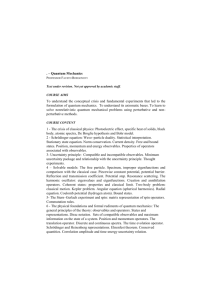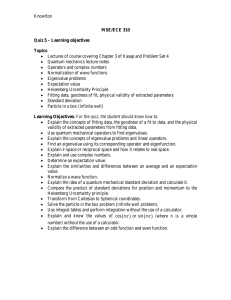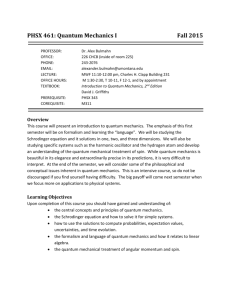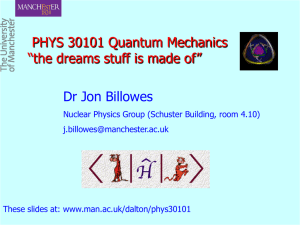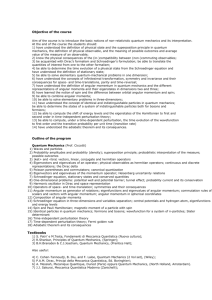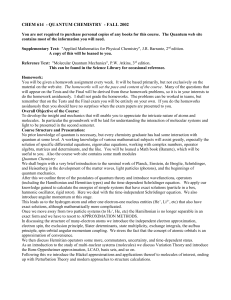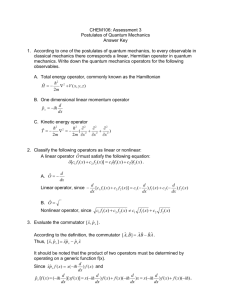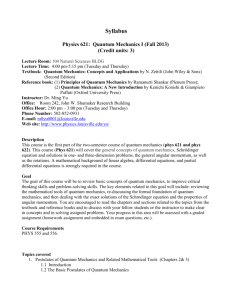CEM 991: Quantum Chemistry and Statistical Thermodynamics I
advertisement
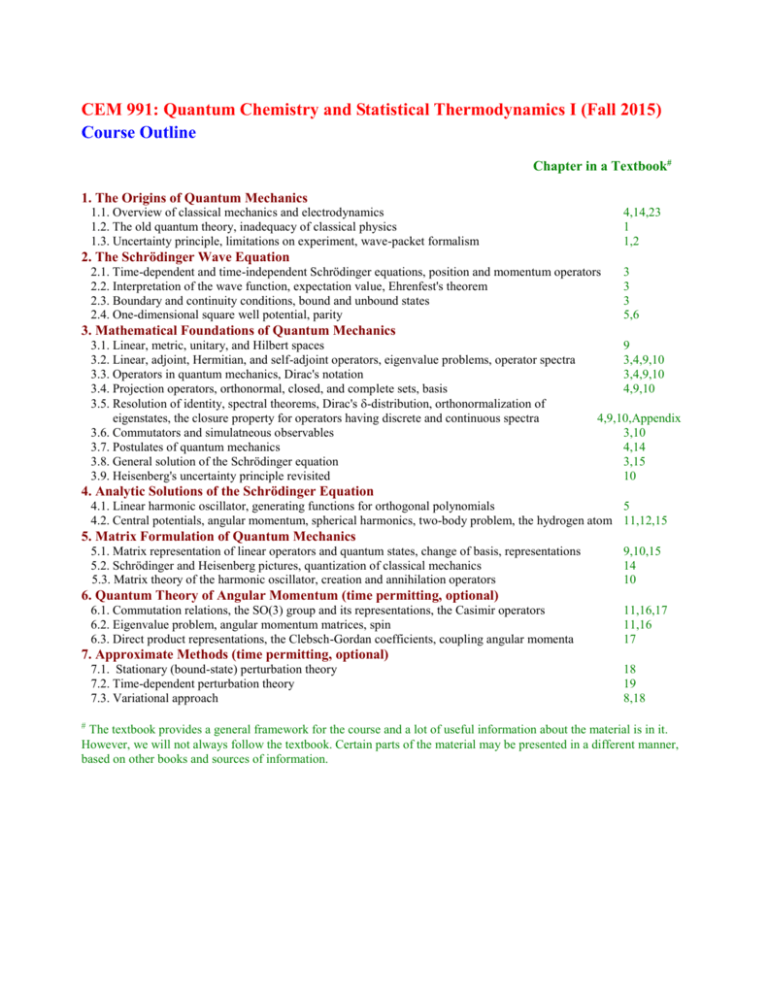
CEM 991: Quantum Chemistry and Statistical Thermodynamics I (Fall 2015) Course Outline Chapter in a Textbook# 1. The Origins of Quantum Mechanics 1.1. Overview of classical mechanics and electrodynamics 1.2. The old quantum theory, inadequacy of classical physics 1.3. Uncertainty principle, limitations on experiment, wave-packet formalism 4,14,23 1 1,2 2. The Schrödinger Wave Equation 2.1. Time-dependent and time-independent Schrödinger equations, position and momentum operators 2.2. Interpretation of the wave function, expectation value, Ehrenfest's theorem 2.3. Boundary and continuity conditions, bound and unbound states 2.4. One-dimensional square well potential, parity 3 3 3 5,6 3. Mathematical Foundations of Quantum Mechanics 3.1. Linear, metric, unitary, and Hilbert spaces 3.2. Linear, adjoint, Hermitian, and self-adjoint operators, eigenvalue problems, operator spectra 3.3. Operators in quantum mechanics, Dirac's notation 3.4. Projection operators, orthonormal, closed, and complete sets, basis 3.5. Resolution of identity, spectral theorems, Dirac's -distribution, orthonormalization of eigenstates, the closure property for operators having discrete and continuous spectra 3.6. Commutators and simulatneous observables 3.7. Postulates of quantum mechanics 3.8. General solution of the Schrödinger equation 3.9. Heisenberg's uncertainty principle revisited 9 3,4,9,10 3,4,9,10 4,9,10 4,9,10,Appendix 3,10 4,14 3,15 10 4. Analytic Solutions of the Schrödinger Equation 4.1. Linear harmonic oscillator, generating functions for orthogonal polynomials 5 4.2. Central potentials, angular momentum, spherical harmonics, two-body problem, the hydrogen atom 11,12,15 5. Matrix Formulation of Quantum Mechanics 5.1. Matrix representation of linear operators and quantum states, change of basis, representations 5.2. Schrödinger and Heisenberg pictures, quantization of classical mechanics 5.3. Matrix theory of the harmonic oscillator, creation and annihilation operators 9,10,15 14 10 6. Quantum Theory of Angular Momentum (time permitting, optional) 6.1. Commutation relations, the SO(3) group and its representations, the Casimir operators 6.2. Eigenvalue problem, angular momentum matrices, spin 6.3. Direct product representations, the Clebsch-Gordan coefficients, coupling angular momenta 11,16,17 11,16 17 7. Approximate Methods (time permitting, optional) 7.1. Stationary (bound-state) perturbation theory 7.2. Time-dependent perturbation theory 7.3. Variational approach # 18 19 8,18 The textbook provides a general framework for the course and a lot of useful information about the material is in it. However, we will not always follow the textbook. Certain parts of the material may be presented in a different manner, based on other books and sources of information.
